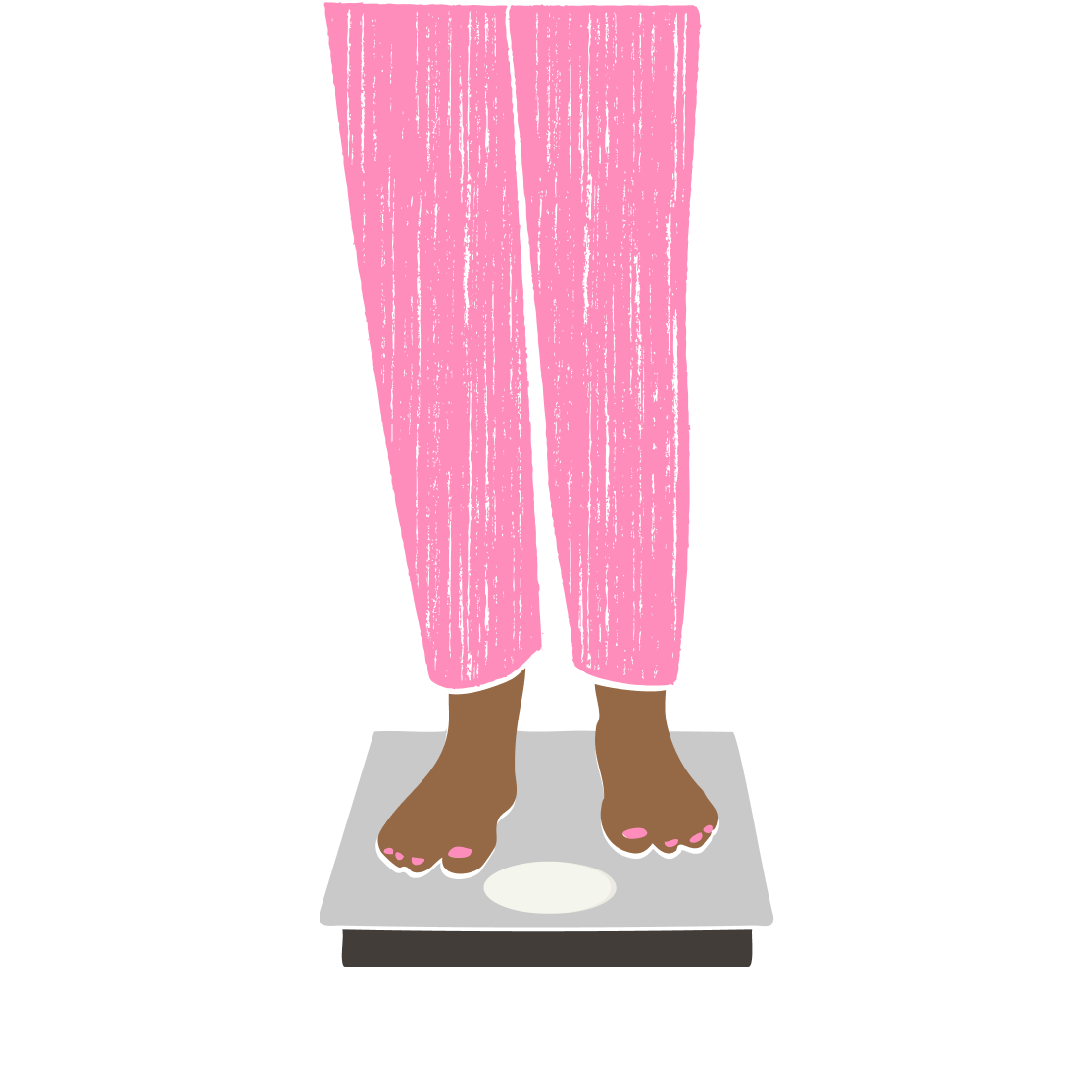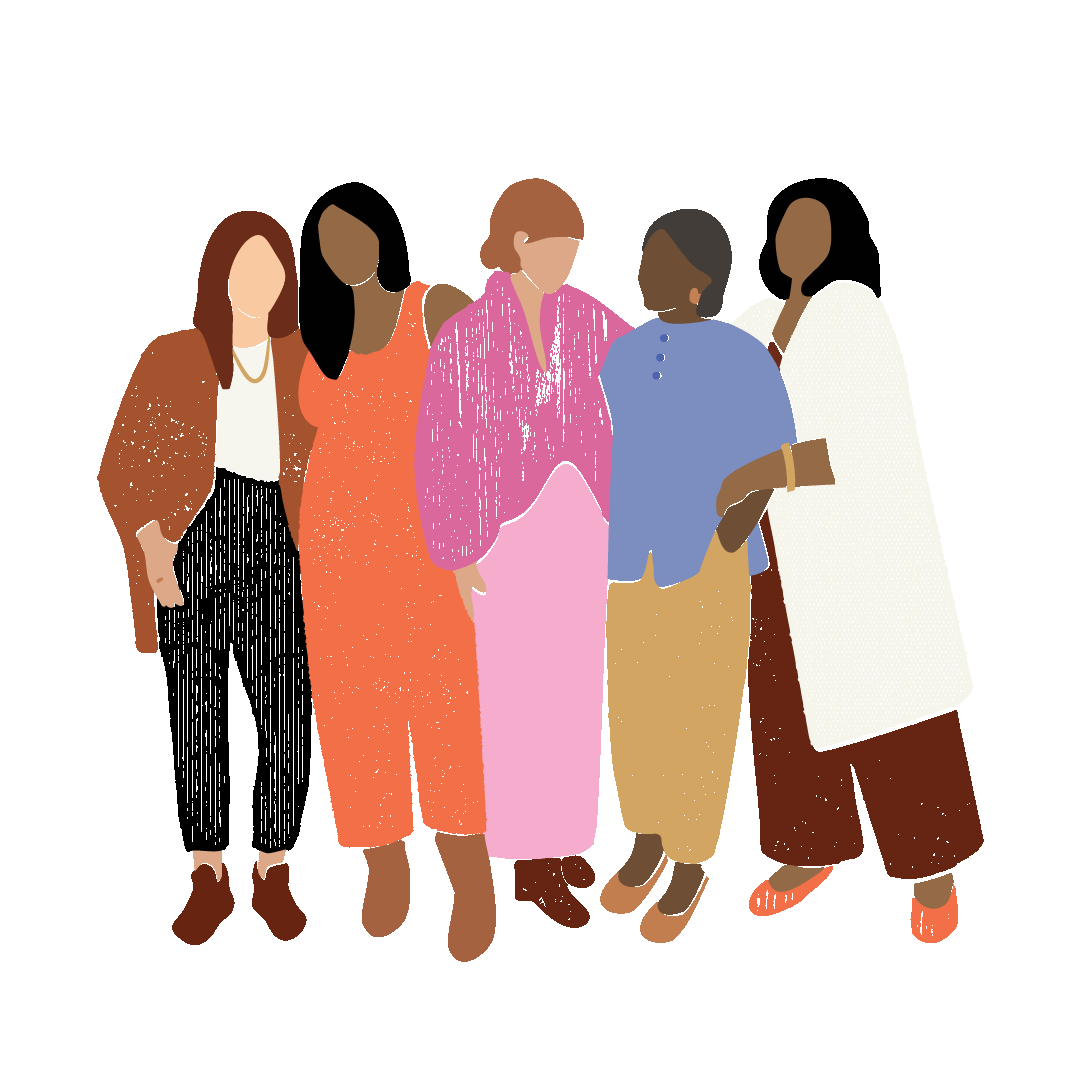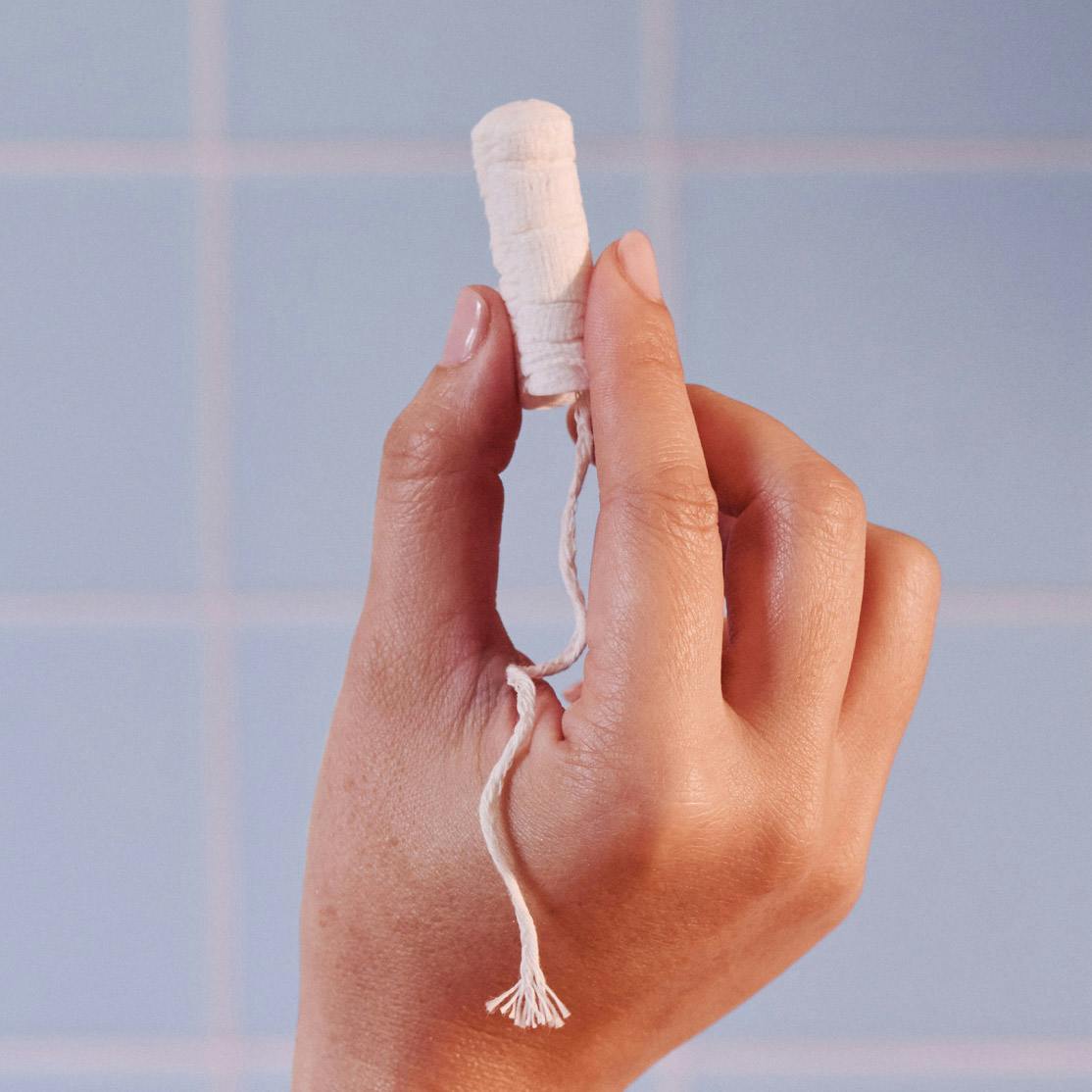Estrogen is the headline hormone in the female body, playing a vital role in women's reproductive and overall health. It affects everything from menstrual cycles and bone density to mood and brain function. Low estrogen levels can cause a wide range of symptoms, including physical issues like hot flashes and breast tenderness, cognitive problems such as brain fog and mood swings, and sexual health challenges like decreased libido and vaginal dryness. The causes of low estrogen are diverse, and treatment options can include hormone replacement therapy (HRT), lifestyle modifications, dietary changes, supplements, and emerging precision medicine approaches that aim to address individual hormonal needs and improve overall quality of life. Bottom line: There's a lot you can do to boost low estrogen levels and mitigate symptoms, especially when you work with a trained healthcare professional, like a Midi clinician.
While it makes sense to connect estrogen with our reproductive health and its role in keeping our periods regular and our sex drive revved up, this hormone does a whole lot more. It brings the body head-to-toe advantages, ranging from mood and brain perks to long-term health benefits.
A number of factors—medical, lifestyle, natural changes—can trigger low estrogen levels, which medical pros refer to as estrogen deficiency. The good news: Low estrogen can be treated to get your whole body back on track so you feel more like you again. Working with a healthcare professional, like a Midi clinician, can help you pinpoint the signs and symptoms of low estrogen so you can take action and feel better. Read on to learn more.
What Is Estrogen?
Estrogen is technically not just one hormone—it’s a group of sex hormones. Produced mostly in the ovaries, estrogens are a woman’s main sex hormones. There are three main types of estrogen, each playing a different role in the body:
- Estradiol (E2): This is the most potent form of estrogen out of the three and the star of the show during your reproductive years.
- Estriol (E3): This form of estrogen is produced by the placenta during pregnancy; levels increase throughout pregnancy and peak right before birth.
- Estrone (E1): This is the weakest form of estrogen created after your periods have stopped (aka menopause). Yes, your body still makes estrogen during this time, just a lot less of it and in this much less potent form.
Estrogen is what sent your body into puberty, controlling your menstrual cycle and egg production. And whether you realize it or not, estrogen has also been playing a role in your libido, weight management, and the health of your brain, bones, and skin all this time. For many years, you may have noticed subtle changes to how you feel as estrogen dips and spikes throughout your menstrual cycle, but as you approach menopause and estrogen begins its jagged, downward trajectory, it’s impossible to ignore the major impact this hormone has on your entire body.

Symptoms of Low Estrogen
If you’re premenopausal and have a regular cycle, it’s normal for estrogen levels to fluctuate throughout the month along with your menstrual cycle. For example, after ovulation, estrogen is high as the uterine lining thickens. If you don’t get pregnant, you’ll get your period and estrogen levels will fall. (If you do get pregnant, estrogen levels will continue to rise.)
If you’re in perimenopause, the stage just before menopause, estrogen levels will fluctuate greatly, and not always timed so neatly to your cycle. As each month passes and you near menopause, estrogen will be on a general decline. (The hormone progesterone plays a role in your menopause journey as well, but for this article, we’re going to focus on estrogen.)
While the menopause transition is a natural process, there are times when low and fluctuating estrogen levels can trigger symptoms that impact your physical, cognitive, emotional, and sexual health.
Physical Symptoms of Low Estrogen
When estrogen is low, you may experience some or all of these physical symptoms:
- Hot flashes and night sweats
- Breast tenderness
- Irregular periods or skipped periods
- Decreased bone density, increasing the risk of osteopenia (reduced bone density) or osteoporosis (more severe loss of bone density)
- Low back pain
- Increased risk of heart disease
- Headaches and migraines
- Fatigue and low energy
- Skin and hair changes, including dryness and wrinkles
- Unintended weight gain
- Urinary incontinence
Cognitive and Emotional Symptoms of Low Estrogen
Your brain, too? Yep, estrogen comes into play in making mood-stabilizing neurotransmitters and also promotes activity in the learning and memory areas of the brain. As a result, low estrogen also contributes to:
- Brain fog
- Problems with concentration and memory
- Mood swings
- Irritability and anger
- Anxiety
- Depression
Sexual Health Symptoms of Low Estrogen
Think of estrogen as nature’s most powerful aphrodisiac. The hormone supports your libido and lubricates tissues all over your body, including those in and around the vagina. So when there’s less of it, it’s no surprise that desire dips as well. With low estrogen, you may experience:
- Decreased libido
- Vaginal dryness
- Painful intercourse
While all these symptoms of low estrogen can feel like an overwhelming laundry list of bad news, there’s no need to get discouraged (really!). You have lots of lifestyle and treatment options that can offset the effects of low estrogen (which we’ll cover below). And working with a healthcare professional, like a Midi clinician, can ensure you’re getting personalized treatment for what you’re feeling. You don’t have to suffer through any of the symptoms on the lists above.
What Success Looks and Feels Like
Causes of Low Estrogen

There are many causes of low estrogen. Here’s a look at what else might be affecting your hormone levels:
Natural Causes
Post-pregnancy: When you’re pregnant, estrogen levels are higher to support a healthy mom and baby. After giving birth, estrogen levels sink rapidly to pre-pregnancy levels. This abrupt change can be hard on your body and mind, triggering symptoms including mood problems and night sweats and more. The good news: Hormone levels should stabilize within a few months.
Menopause: A more permanent driver of low estrogen is the menopausal transition, when estrogen levels fluctuate and decline, then bottom out when you reach menopause, which marks the end of your reproductive years. You’ll still have some estrogen (called estrone), but estrogen levels overall remain low.
Medical Causes
Low estrogen levels may be a byproduct of medical treatments or underlying health conditions, including:
- Surgical removal of your ovaries (oophorectomy)
- Cancer treatments including chemotherapy and radiation
- Health conditions, such as pituitary disorders (the pituitary gland stimulates ovaries to produce estrogen)
- Premature menopause (menopause before age 40)
- Taking certain medications that affect hormones

Environmental and Lifestyle Factors
Your lifestyle and surroundings can also affect estrogen levels:
- Exposure to endocrine-disrupting chemicals: These chemicals may mimic estrogen and act as estrogen blockers to negatively affect hormonal balance in your body. Unfortunately, these chemicals are ubiquitous and are found in plastics, packaging, furniture, nonstick pans, fragrances, and more. According to the Endocrine Society, studies support a link between EDCs and harm to human health, but the cause-and-effect relationship is not yet fully understood. Still some EDCs are known to pose a threat to people who have excessive exposure to them.
- Chronic stress, which research shows can reduce estrogen levels and impact autoimmune events
- Under-eating and overexercising, which can cause a condition called hypothalamic amenorrhea (where you lose your period entirely).
- Extreme weight loss
How Low Estrogen Is Diagnosed
Although you may suspect estrogen is low if you have symptoms like hot flashes and night sweats or your partner is telling you your mood is all over the place, you won’t outright know if you have low estrogen until you meet with a healthcare provider. During this appointment, you’ll have a thorough discussion about your medical history and symptoms. With that information, your healthcare provider can work with you on developing a care plan that combines hormonal and non-hormonal therapies that address estrogen deficiency and ultimately help you feel better.
Health Risks of Low Estrogen
Hormonal health can be tricky—it’s not something you can see but…wow…can you feel it. That’s even more true when estrogen levels are fluctuating wildly, dropping low, then spiking high on repeat. However, low estrogen can also affect your health in ways you don’t feel—at least not right away. Because there are estrogen receptors all over your body (including your bones, heart, and arteries), over time, low estrogen can make you more susceptible to:
- An increased risk of fracture due to osteopenia or osteoporosis. Estrogen promotes bone density. As it drops, you’re more vulnerable to developing osteoporosis, a disease that affects about one in five women over 50 in the United States.
- An increased risk of heart disease. Menopause often results in an increase in blood pressure and cholesterol levels and causes weight gain, especially around your middle, which can increase inflammation (also a detriment to your heart).

Treatment Options for Low Estrogen
If you’re dealing with low estrogen, there’s probably one question top of mind: How do you address it? You’ve got options. The right treatment plan will differ for every woman depending on the cause of low estrogen, her age and stage of life, health status, and personal preferences. Here’s what you might talk to your clinician about:
Hormone Replacement Therapy (HRT)
Hormone replacement therapy, sometimes referred to as menopausal hormone therapy (MHT), is used to treat menopausal symptoms brought on by changes in hormone levels. The name is a little misleading—you’re not replacing any hormones but supplementing your levels.
HRT works by releasing estrogen into the bloodstream or vaginal tissue, and is available in many forms, including pills, patches, vaginal rings, and topical creams and gels. To protect the uterus (in patients who haven’t had a hysterectomy), doctors add progesterone or progestin to estrogen, which reduces the risk of uterine cancer. HRT is a top-line treatment for the vasomotor symptoms of menopause (like hot flashes) and it’s been shown to be safe, though it isn’t right for every woman. You’ll want to work with a healthcare professional, like a menopause specialist to determine if it’s right for you.
Non-Hormonal Treatments
Everyone can benefit from lifestyle adjustments that support hormonal health. Making some of these changes alone can improve your energy, mood, and sense of well-being.
- Diet: When it comes to your diet, it makes sense to be thoughtful about your eating as you focus on getting your hormonal health in a good place. Start with this list of foods worth adding to your plate—including whole soy, flaxseeds, legumes, and cruciferous veggies.
- Supplements: In some circumstances, dietary supplements may be recommended, such as vitamin D and calcium to support bone health. If you’re unsure how to fit these into your diet or need additional nutritional strategies, talk to your clinician or connect with a registered dietitian for individualized diet advice.
- Botanical therapies (like black cohosh) may also be recommended to treat menopausal symptoms like hot flashes.
- Exercise: On its own, it supports general wellness and can aid in stress relief.
- Targeted solutions: Your clinician may also recommend treatments specific to your symptoms. For example, if you have vaginal dryness that interferes with your enjoyment of sex, you can definitely benefit from a lubricant during intercourse. If your facial skin is dry, then getting on a good skin care regimen that restores moisture and helps build collagen will help. For fatigue, working on sleep hygiene habits and adding in exercise will be important for your energy levels.
Doing what you can to decrease your exposure to endocrine-disrupting chemicals will also support hormonal health over time. Yes, these chemicals are everywhere, but there are meaningful changes you can make, including avoiding using certain plastic containers and bottles and types of canned food, filling your diet with fresh and organic produce, avoiding processed foods, and considering certain supplements like vitamin C, found one study in the International Journal of Gynecology & Obstetrics.
Emerging Treatments and Therapies
Low estrogen isn’t caused by just one thing, which is why there’s no one-size-fits-all treatment for hormonal health. The emergence of precision medicine—or personalized medicine, which factors in your specific genes, environment, and lifestyle—is a really exciting advancement in care. Precision medicine is often used in cancer treatment, but it also extends to clinics that are focused on holistic treatments—or all-around care—that wraps hormonal, medical, and lifestyle approaches into an individual’s treatment.
With in-depth conversation and a deep dive into your symptoms and health history, trained clinicians like those who work with Midi, can create a care plan that is centered on the individual patient. You’re not part of a formula or subject to “the way things have always been done.” Instead, you will get a customized plan ideal for your health, lifestyle, and preferences. That’s what’s going to make a difference for your symptoms and quality of life.
When to See a Doctor
With so much life stuff going on, especially for those of us in midlife, there’s a temptation to brush off symptoms, or blame them on stress. We get it, but draggy, moody, brain foggy feelings can’t always be chalked up to a packed schedule. (Though that doesn’t help.) When you’re having symptoms discussed in this article that are persistent and disrupting your days, it’s time to talk to a clinician. With early diagnosis and treatment for low estrogen, you can feel better in the short term and also decrease the risk of chronic health problems like osteoporosis and heart disease down the line.
The Takeaway
- Estrogen is the blanket term for a group of female sex hormones that support reproductive and overall health starting in puberty. Because you have estrogen receptors all over your body, estrogen deficiency can have a negative impact on your physical, cognitive, and emotional health.
- There are so many reasons why you may have low estrogen, including natural changes like perimenopause and menopause, surgical procedures like ovary removal, underlying medical conditions like pituitary disorders, and lifestyle factors like excessive stress.
- Low estrogen may be addressed using a holistic approach, which can include prescription medications, botanicals and supplements, and lifestyle changes. Treatments may also be recommended that address specific symptoms to help you find relief.
- To treat low estrogen in midlife with medical therapies and lifestyle coaching, partner with a healthcare provider who is knowledgeable about the menopausal transition, like a Midi clinician.
Frequently Asked Questions
How do you fix low estrogen levels?
First, work with a clinician to identify why your estrogen levels may be low. Understanding the reasons behind likely hormonal changes will guide your treatment. For example, if perimenopause is the key cause, hormonal birth control or hormone replacement therapy (HRT), non-hormonal treatments, herbs and supplements, and lifestyle adjustments like diet changes may all be used to treat low estrogen symptoms.
What are the signs of low estrogen in women?
If you have low estrogen, you may experience symptoms including hot flashes and night sweats, mood swings, brain fog and memory problems, vaginal dryness, and more. In the long-run, low estrogen can also increase the risk of chronic diseases like osteoporosis and heart disease, though there are many additional factors that contribute to these conditions.
What does a "low estrogen face" look like?
A low estrogen face often refers to skin that's duller and thinner with more wrinkles. When you use targeted solutions to boost estrogen levels, like HRT or a topical estriol cream on the face, you may see positive facial changes, such as plumper, more hydrated skin.
How can I raise my estrogen levels quickly?
This may not be what you want to hear but successfully treating low estrogen won’t happen overnight. That said, for the quickest results, you’ll want to attack hormonal health from multiple fronts. Ask your clinician if HRT might be right for you, make necessary dietary changes, get more sleep, manage your stress, and add in moderate exercise.
Does estrogen make you feel good?
It certainly does! Estrogen helps produce neurotransmitters that regulate your mood, promotes good sleep, keeps vaginal tissue elastic and moisturized for your day-to-day comfort and sexual health, keeps the skin on your face and body hydrated, and much more. It makes sense then, that when this essential hormone is low, you feel the effects physically, emotionally, and sexually. If you experience symptoms of low estrogen, get the care—and the relief—you need and deserve.
If you’re in perimenopause or menopause and want guidance from clinicians who specialize in women’s midlife health, book a virtual visit with Midi today.
Hormonal change is at the root of dozens of symptoms women experience in the years before and after their period stops.
Our trained menopause specialists can help you connect the dots to guide you towards safe, effective solutions.
Whether you need personalized guidance or a prescription routine to tackle symptoms—including vaginal dryness and irritation, brain fog, hot flashes, sleep trouble, mood swings, and weight gain—we’ve got you covered.
Midi’s mission is to revolutionize healthcare for women at midlife, wherever they live and whatever their health story. We believe that starts with education, to help all of us understand our always-changing bodies and health needs. Our core values guide everything we do, including standards that ensure the quality and trustworthiness of our content and editorial processes. We’re committed to providing information that is up-to-date, accurate, and relies on evidence-based research and peer-reviewed journals. For more details on our editorial process, see here.







